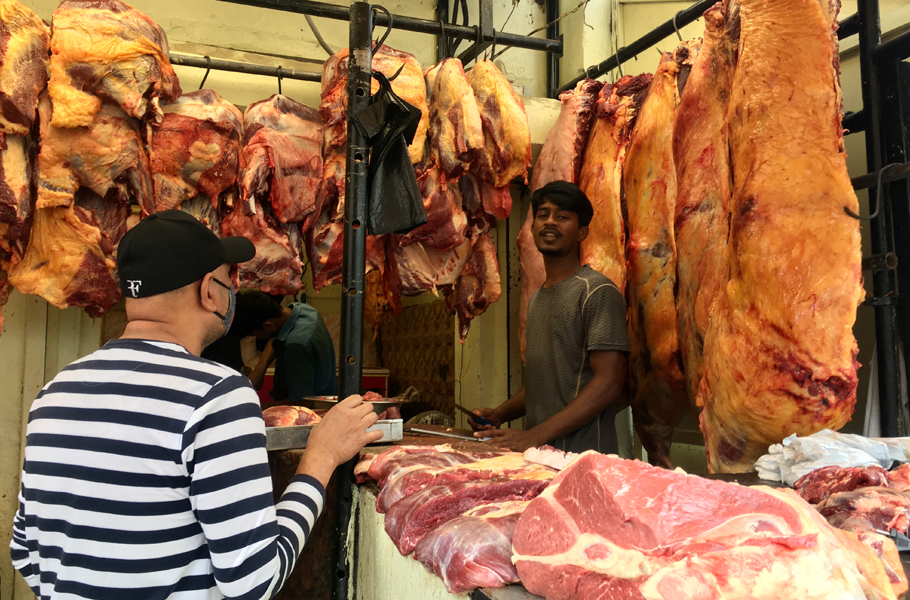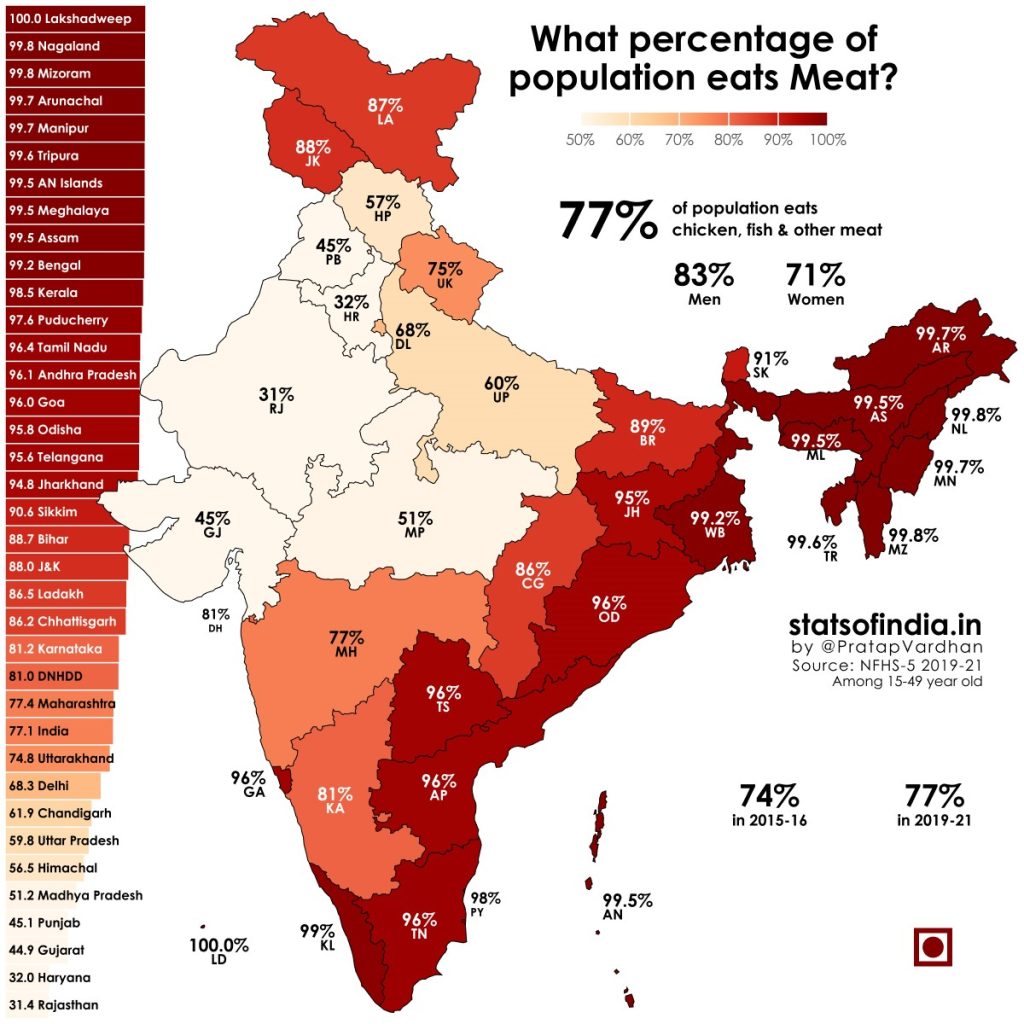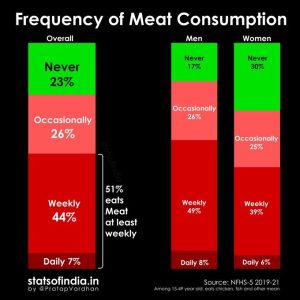
Tiny Lakshwadeep India's biggest meat eater; Rajasthan the smallest: Survey
North-East, South states are big on meat dishes; North-West states of Rajasthan, Gujarat, Punjab, Haryana, have smallest percentages of meat-eaters

As India’s meat consumption seems to be rising steadily, two island UTs and North-East states top the charts among all the states in the country as the biggest consumers of meat. Their meat-eaters form a large portion of their overall populations.
According to the fifth edition of the National Family Health Survey, or NFHS-5 (2019-21), the Union Territory of Lakshwadeep islands, which was in the eye of the storm when a ban on slaughter of cow, buffalo and calf was imposed last year, records the highest consumption of meat, at 100 per cent.
The Federal webinar: What it means to be a non-vegetarian in today’s India
In India’s paradise island, though everyday meals comprise rice and fish, a majority of the inhabitants made up of Muslims eat beef as part of their regular diet. Andaman Islands, too, ranks high on this list of meat eating states/UTs at 99.5 per cent, probably because, besides the staple diet of fish, the natives eat all kinds of meat including turtles, wild boar, and other animals endemic to the islands.
The North-East states are closely behind the UTs. Nagaland, Mizoram, Arunachal, Meghalaya, Manipur, Tripura, Meghalaya and Assam have high percentage of meat eaters at more than 99 per cent. Bengal, where the cuisine is dominated by fish and meat, also records a majority of meat eaters among its people. The NFHS statistics show that 99.2 per cent of people in Bengal relish meat.
The clutch of South Indian states such as Telangana (95.6 per cent), Kerala (98.5 per cent), Tamil Nadu (96.4 per cent) Puducherry (97.6 per cent) too records high rates of meat consumers. BJP-ruled Goa ranks high at 96 per cent.
Also read: More Indian men eating non-veg food than before, finds survey
However, the southern state of Karnataka records a slightly lower figure that showed that 81.2 per cent of its people eat meat. The western state of Maharashtra too has 77.4 per cent of its people eating meat, while in Gujarat just 44.9 per cent are meat eaters. Even as food today has become a political tool to polarise the Indian community, NFHS statistics showed that 68.3 per cent of Delhiites are meat eaters.

The North Indian states like Uttar Pradesh has 59.8 per cent meat eaters, Chandigarh 61.9 per cent, Himachal 56.5 per cent and Punjab 45.1 per cent. At the bottom of the pile is Rajasthan, the country’s largest state by geographic area, with just 31.4 per cent of its people being meat eaters.
In the final analysis, other than the four states of Rajasthan, Haryana, Gujarat and Punjab, the majority consume meat.
Indians are eating more meat with every passing year
Meat demand is associated with higher incomes and a shift – due to urbanisation – to food consumption changes that favour increased proteins from animal sources in diets. According to the OECD, which said that India’s consumption of meat has steadily shot up with every passing year, the country consumed 6 million tonnes of meat in 2020.
The OECD observed that India has shown a consistent spike in the consumption of all four meat types – beef, poultry, mutton and pork. Media reports stated that chicken is the most favoured meat, followed by beef. Last year, Indians consumed 3,372 tonnes of chicken, and 1,049 tonnes of beef. The amount of pork and sheep meat in the same year was 401 and 725 tonnes, respectively.
Also read: Explained: Vegan food as per Centre’s new notification
Meanwhile, the NFHS survey 2019-2021 revealed that overall, 77 per cent of the population in the country eat meat like chicken, fish and others, burying the image of India as a vegetarian nation for ever. This is slightly higher as compared to the 2014-16 data, which showed that the number then was 74 per cent.
 Frequency of meat consumption
Frequency of meat consumption
Further, the NFHS-5 data on frequency of meat consumption showed that 51 per cent eat meat at least weekly. Around 26 per cent eat it occasionally, and 23 per cent do not touch meat.
Moreover, according to the data, men are bigger consumers of non-vegetarian food like meat. This data showed that 83 per cent of men consume meat, while 71 per cent of women eat meat. On a weekly basis too, men eat meat more often – 49 per cent men eat it weekly, while it is 39 per cent in the case of women. Around 17 per cent of men never eat meat, while 30 per cent women steer clear of it.
Religious reasons could be behind this – women observe various ‘vrats’, for which they adhere to vegetarian meals. The more obvious reason is men being given priority at family meals, and served more nutritious meals than their female relatives.
Also read: What’s halal meat? What’s Hindutva groups’ beef with it?

